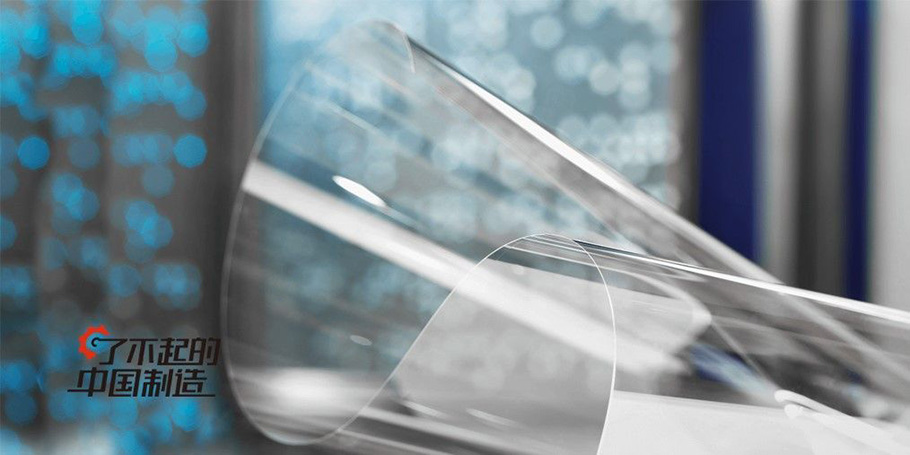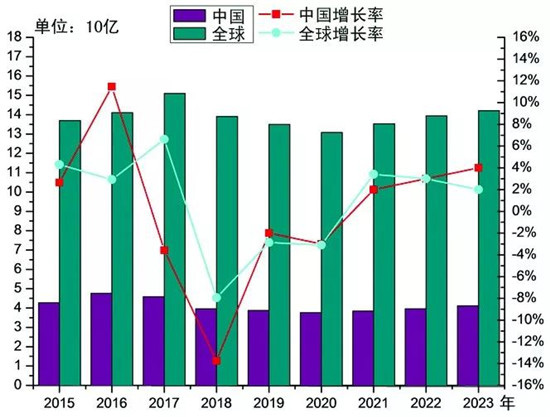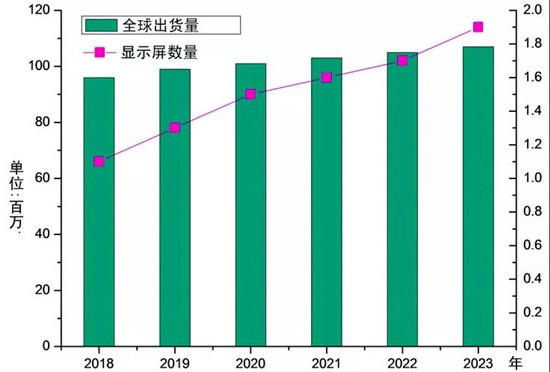With the continuous development of the display industry, electronic glass processing technology is also updated and advanced. By contrast, the current ultra-thin electronic glass processing technology than the general glass processing technology, has more high precision, high quality, processing difficulty and other characteristics.

In the next few years, the electronic glass processing products market as a whole presents a steady development trend. In the traditional market of electronic glass processing products, tft-lcd display technology is still the mainstream, and the corresponding market of electronic glass processing products is still very large, but the overall market is almost saturated, and even slightly reduced. In the emerging market of electronic glass processing products for display, 3D cover glass market, as an emerging market, has a good development prospect and will show a relatively high growth trend in the next few years. Vehicle-mounted display and intelligent building display are also important markets that can be developed and utilized in the future. In recent years, electronic glass processing products are also facing new problems and challenges. The emerging OLED display technology has developed rapidly in recent years, with an average growth rate of about 20%. Due to the reduction in the number of electronic glass processing products required, especially the flexible screen only USES the substrate glass in the manufacturing process, which brings great impact on the market of electronic glass processing products.
Overall, the ultra-thin electronic glass processing products market opportunities and challenges coexist. While maintaining the original market, we should actively explore new markets, strengthen the independent research and development of core processing equipment and raw materials, better adapt to the new development needs, in order to truly improve processing technology and expand the corresponding product market.
As one of the raw materials for display panels of smart phones, televisions, computers and other electronic products, ultra-thin electronic glass has a huge market demand in China and shows an increasing trend year by year. The development of display industry has promoted the development of ultra-thin electronic glass processing technology and expanded the application market of corresponding products. However, with the emergence of new display technology and process technology, the ultra-thin electronic glass processing technology and the corresponding product market has posed new challenges.
Traditional markets are growing steadily
The traditional market of ultra-thin electronic glass processing products mainly refers to the existing smart phone, smart TV, computer and other markets.
Smart phones include a variety of electronic glass processing products such as substrate glass, color filter glass, ITO conductive glass, light guide plate glass, and front and rear cover glass of mobile phones, which is one of the important application fields of electronic glass. The large-scale, intelligent and high-purity of smart phones, especially 5G communication, has brought huge market demand for electronic glass processing.
About 1.4 billion units were shipped globally in 2018. Of these, about 400 million were shipped in China, accounting for nearly 30 percent of global shipments. The trend of smartphone shipments in China and the world is shown in figure 1. Although smartphone shipments have shown negative growth since 2017, it is estimated that they will reach a trough of about 1.31 billion by 2020, and then gradually increase by about 3% every year. By 2023, it can recover to about 1.42 billion units, but the total number fluctuates between 1.3 billion and 1.4 billion units, which brings huge market demand for electronic glass processing. At the rate of 1.35 billion shipments per year, at least 1.35 billion pieces of ITO conductive glass, colored filter glass, front cover glass, and base plate glass are needed. Based on the average screen size of a phone of 6 inches, the area of electronic glass processing needs to increase by at least 76 million square meters, with 23 million square meters needed in China alone. Although these belong to the traditional market, there is still a great market and vitality.

Trends in smartphone shipments in China and around the world
Figure 1 development trend of smartphone shipments in China and the world
The market for computer television is close to saturation and fluctuates only to a small extent. In 2018, 218 million LCD TVS were shipped worldwide. In 2018, China produced 5,229 LCD TVS, with 38.55 million square meters of panels needed in China alone. Although the number of TV sets is basically saturated, increasing at a rate of about 2% per year, the size of TV sets is gradually increasing, and with the development of China's overseas market, the required panel area in China should be steadily increased from the existing basis. Similarly, about 250 million PCS and 140 million tablets were shipped globally in 2018, which are basically saturated and declining at an annual rate of about 2%. It is expected to show a slight growth trend after 2020. The electronic glass processing market for TV and computer is basically in a saturated state. While maintaining the original market, it needs to improve the processing technology and technology to better meet the market demand.
Emerging markets are promising
Emerging markets for ultra-thin electronic glass processing products mainly include the market for electronic glass processing products used in curved cover, vehicle-mounted display and intelligent display of buildings.
The phone cover has experienced the development process from 2D, 2.5d, 3D and even 3.5d. With the advent of 5G communication, 3D cover glass is well received by the market for its excellent anti-signal interference ability, lightness, transparency and cleanliness, anti-fingerprint, anti-glare, hardness, scratch resistance, weather resistance and excellent tactile experience. Currently, the main mobile phone production enterprises such as huawei, samsung, apple, millet have started to use 3 d flat glass, and from the back of the use of 3 d cover plate to the back of positive sides to use 3 d plate glass direction development, to further expand the plate market, potential to become the current electronic glass processing products one of the big emerging markets. The 3.5d cover, currently in the experimental stage, can be used for active matrix organic light-emitting diode (AMOLED) displays, foldable AMOLED displays and flat liquid crystal display (LCD) panels in a special curved form.
Global shipments of cell phone cover glass (both front and back) are increasing year by year and are expected to reach 2.4 billion pieces in 2019, up 13.9% from 2.1 billion pieces in 2018, and this steady growth will continue in the coming years. It is expected to reach 3 billion in 2023. Based on the average size of mobile phone screens of 6 inches, it needs at least 42 million square meters of 3D cover glass, and currently China accounts for nearly 30% of global shipments, which will bring huge market and profits to the world and China's electronic glass hot-bending products. But at the same time with the improvement of processing accuracy, processing difficulty will be more and more, the processing technology also put forward higher requirements.
On-board display is an important field of electronic display in the future. Figure 2 shows the forecast of total vehicle sales and number of display screens per vehicle from 2018 to 2023. As can be seen from the figure, the number of on-board display screens increased from 1.3 in 2019 to 1.9 in 2023, and the number of on-board display screens increased from 120 million in 2019 to 210 million in 2023. The chart shows that the on-board display has a huge development space, which USES a large number of electronic glass processing products such as ITO conductive glass and curved glass for deep processing. At present, China's automobile sales have accounted for about 30% of the global sales, so the electronic glass processing products for on-board display have a large market development space both at home and abroad.

Forecast chart of total vehicle sales and number of display screens per vehicle from 2018 to 2023
Figure 2 forecast chart of total vehicle sales and number of display screens per vehicle from 2018 to 2023
In addition, electronic glass processing products in the building glass curtain wall, indoor and outdoor decoration and other aspects also have great development space. At present, our country has nearly 100 million square meters of glass curtain wall every year, replace glass curtain wall with intelligent display, plus intelligent window glass, will bring huge future market development space for electronic glass processing products.
Product problems
The problems of ultra-thin electronic glass processing products mainly include two aspects: the market problems brought by the new display technology; Raw materials and technical problems of equipment used in processing.
With the continuous development of new display technology, especially the development of OLED display technology and foldable flexible display, the quality and quantity requirements of electronic glass processing products have changed. OLED display technology is one of the technologies developing rapidly in recent years, with an average annual growth rate of around 20%. Although tft-lcd remains the mainstream display technology in the past five years, OLED display technology is growing rapidly as an emerging technology market, with its market share rising from 4.0% in 2018 to 13.8% in 2023. Together with other display technologies, it could account for as much as 21.7 percent of the market by 2023. OLED screens are divided into rigid screens and flexible screens, in which the rigid screens no longer require colored filter glass and light guide plate glass, while the flexible screens only use glass substrates in the processing process, while the others no longer use glass products, which will seriously affect the market of electronic glass processing products.
Another problem of ultra-thin electronic glass processing products is the equipment used in the processing of raw materials and technical problems. At present, China has been able to produce a variety of screens, which is inseparable from the progress of electronic glass processing technology. However, the core equipment and some core raw materials used in the process of electronic glass processing need to be imported, which is extremely unfavorable to the current and future further development, and will seriously hinder the development of electronic glass processing technology and the development of the corresponding product market.
Post time: Dec-11-2019

